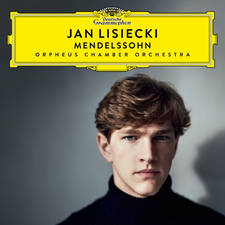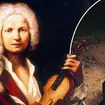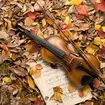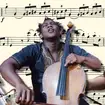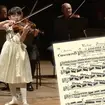Vivaldi: A Life
Antonio Vivaldi was one of the Baroque period's most gifted and prolific composers. But his life wasn't just about the music - find out about the women, the priesthood and how he died alone.
A flamboyant character with an eye for the ladies, Antonio Vivaldi was one of the most prolific composers of the 17th century. For sheer facility, only Handel and Telemann out-quilled him on the music-production line. The Italian’s vast output includes 86 solo and trio sonatas, a substantial quantity of vocal music, some 46 operas, and an astounding 500 concertos.
Vivaldi defied a lifetime of ill-health by regularly absenting himself from his home base of Venice in his desperate attempts to establish an international reputation. For a while he was idolised as something of a “pretty-boy” virtuoso, yet even the indefatigable Vivaldi could do little in the end to prevent the notoriously fickle Italian public deserting him for the latest teenage sensations.
Compared with musical heavyweights such as Bach and Handel, some feel that Vivaldi had a limited expressive range and tended to fall back on stock-in-trade musical devices. Yet the waspish quip that he composed the same concerto several hundred times doesn’t hold up to close inspection. The extraordinary level of invention and variety he achieved, working within such well-defined limits, is staggering.
The exact date of Vivaldi’s birth confounded scholars for many years, although it was known that a problem immediately following his delivery resulted in the midwife performing an emergency baptism. One theory is that the earthquake that hit Venice on March 4, 1678 may have induced general panic around the future composer’s bedside. However, it is far more likely that the lifelong affliction that Vivaldi referred to as “strettezza di petto” (probably asthma) had made itself apparent from the start. In any case, Antonio was officially baptised on May 6.
Vivaldi’s father, Giovanni Battista, was a violinist at St Mark’s Cathedral, and although he taught his prodigiously gifted son to play from early childhood, a musical career seemed unlikely, especially after the 15-year-old Vivaldi was shunted off to join the priesthood. He received Holy Orders in 1703, and thereby earned the nickname “Il Prete Rosso” (“The Red Priest”) on account of the distinctive colour of his hair. He was based largely at home during his training and thus managed to continue his musical studies during his spare time.
Following his ordination Vivaldi appears to have turned his back on the church almost immediately: he gave up attending mass and went in search of “worldly” employment. Within just a few weeks he had secured his first professional appointment as maestro di violino at the Pio Ospedale della Pietà, one of four orphanages for girls in Venice. Remarkably, this was to remain his base for the greater part of his life from 1703 to 1740, including several prolonged leaves of absence.
The French classical scholar, historian and traveller Charles de Brosses wrote of the Pietà orchestra: “These [orphans] are brought up at the State’s expense and trained exclusively in music. Their performances are completely unaided and each concert is composed of about 40 girls. I swear there is nothing more charming than to see a young and pretty nun… leading the orchestra and beating time with all the grace and precision imaginable.”
It was largely for the highly gifted members of the Pietà that Vivaldi composed his remarkable series of instrumental concertos and sonatas. His first publication appeared in 1705 (a set of 12 trio sonatas), but it was L’estro Armonico (“The Inspiration Of Harmony”), published in 1711, that fully declared Vivaldi’s exuberant inventive genius. Eight out of the 12 concertos in this set are constructed using his preferred fast-slow-fast format, with bold, assertive outer movements enclosing a more contemplative central one. This outstanding set so impressed Johann Sebastian Bach that he transcribed six of the works.
During his time at the orphanage, Vivaldi composed over 200 solo violin concertos, 27 for solo cello, and around 20 apiece for the flute and oboe, the latter for an outstanding young player at the Pietà referred to simply as “Susanna” in surviving documents. One can safely assume that Vivaldi also had someone special in mind when he churned out an unprecedented 39 concertos for the bassoon, but sadly her name has been lost in the sands of time.
Given that Vivaldi was never the most healthy or robust of people, and that his rather cushy job at the Pietà suited his genius to a tee, he might well have decided to see out his days in this idyllic environment. However, by now jealous factions were emerging from behind the scenes, determined to get rid of him. As a result – following several changes of title, a temporary dismissal, and with his music gaining in recognition – Vivaldi began to spread his wings. From 1718-20 he was based in Mantua, and then spent most of the 1720s commuting back and forth between Rome and Venice, occasionally posting parcels of his latest concertos to the Pietà from the Italian capital.
One indication of Vivaldi’s rising fame is the remarkable set of six flute concertos, Op.10, that he composed in 1726, inspired by his encounters in Venice with the great virtuoso/composer Johann Quantz. These were almost certainly written in response to a commission from the Amsterdam publisher Le Cene, who was keen to cash in on the growing popularity of the flute throughout Europe. Having no original flute concertos to hand, and with no time to freshly compose any, Vivaldi relied almost entirely upon adaptations – using a favourite Baroque ploy, five of the concertos are arrangements of existing works. The year before, Vivaldi had had a set of four violin concertos published that were destined to make his name – but not for another two-and-a-quarter centuries: The Four Seasons.
Throughout the 1730s Antonio continued to travel widely – to Bohemia, Austria and throughout Italy – despite the fact that his worsening health meant taking an expensive entourage of carers with him. Among them were the talented operatic contralto Anna Giraud and her sister Paolina, both of whom, it was widely believed, were more to Vivaldi than just good friends.
Vivaldi was meanwhile enjoying no small amount of success as a composer of operas – a much undervalued area of his output nowadays – although his continued absences from Venice, the failure of some of his later work and the general goings-on with the Giraud sisters (which he strenuously denied) combined to dampen the public’s former ardour for The Red Priest.
Charles de Brosses, who became intimate with Vivaldi towards the end of the composer’s life, paints a rather sorry picture of a spent force for whom even the Venetians apparently had little time anymore: “He is an old man with a mania for composing. I heard him boast of composing a concerto in all its parts quicker than a copyist could write them down. To my great astonishment, I find that he is not as well regarded as he deserves in these parts [Venice], where everything has to be fashionable, where his works have been heard for too long, and where last year’s music no longer makes any money.”
Severely short of funds and desperately unwell, the 62-year-old Vivaldi made one last ill-advised trip to Vienna in the hope of rekindling former glories. Destitute and alone, he passed away there on July 28, 1741 aged 63, and, largely unnoticed, was given a cheap burial the same day in a hospital cemetery that sadly no longer exists.
Vivaldi’s art virtually died with him, largely because most of his contemporaries had valued him more highly as a violinist than as a composer. Incredibly, it was not until the 1920s, when his private collection of original scores was unearthed, that his name began to be more widely circulated. It is only after years of painstaking research and re-evaluation that Vivaldi has finally established his rightful place as perhaps Italy’s greatest-ever composer of instrumental music.
As one German traveller of the period put it after seeing Vivaldi play: “Nothing like this has ever been seen before, nor will it ever again.”
